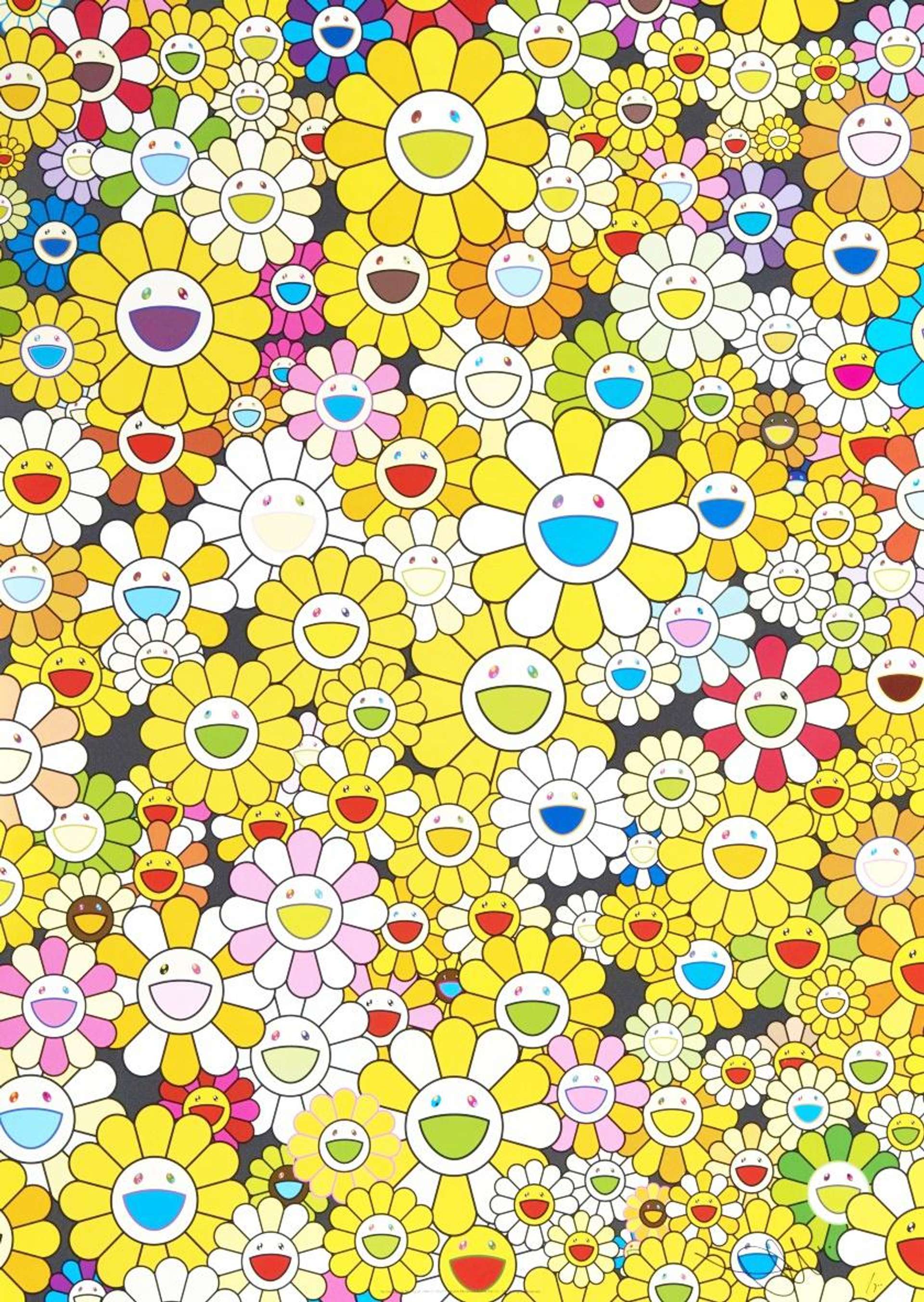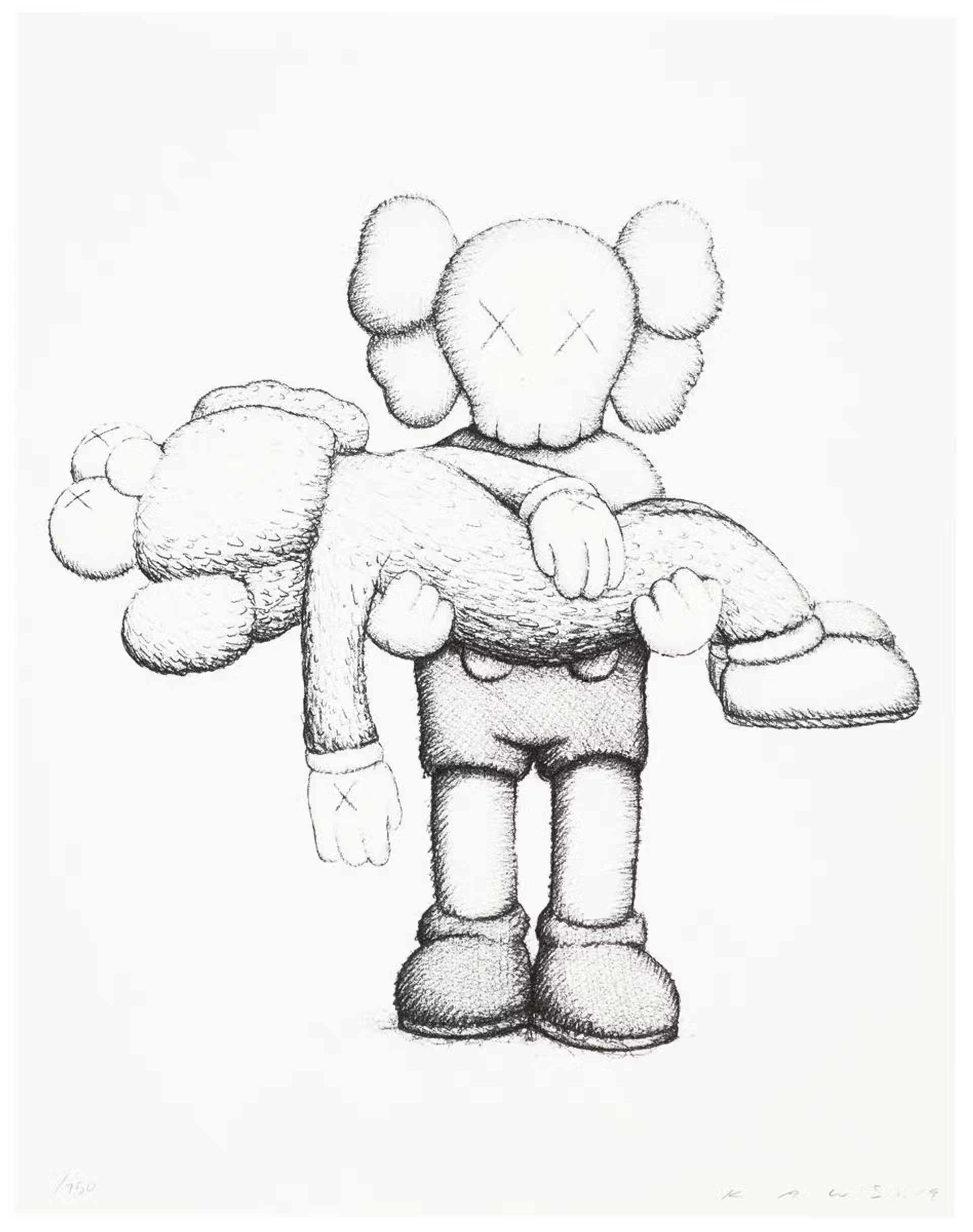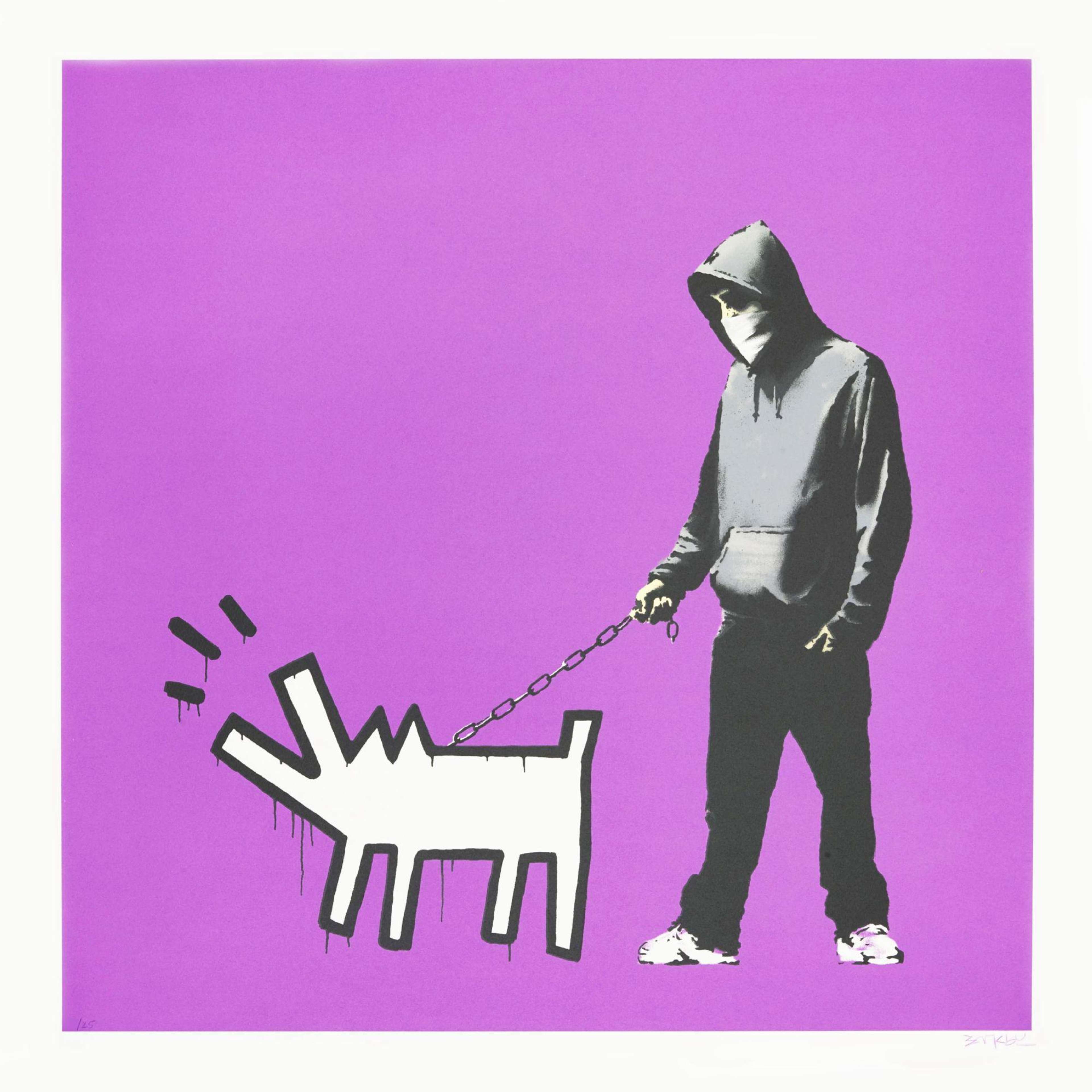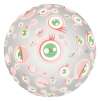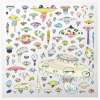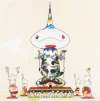 Killer Pink © Takashi Murakami 2003
Killer Pink © Takashi Murakami 2003Market Reports
What do Kanye West, Billie Eilish and Pharrell Williams have in common? Well, apart from a few Grammys – they’re all ardent fans of the man often called the ‘Warhol of Japan’, Takashi Murakami. Murakami is an artist who has successfully walked the tightrope between commercial and critical success for nearly 40 years. His collaborations with celebrity devotees and luxury brands, not to mention his ever growing Instagram following, have all brought him fame far behind the contemporary art world. The secondary market for the artist’s work has seen a steady increase in recent years, outperformed by few contemporary printmakers.
Commercial Appeal
To fellow artists and art experts, Murakami is the theorist behind the contemporary art movement he calls “Superflat” – an aesthetic which combines classical Japanese art with contemporary Japanese pop culture. To collectors, he is famous for his psychedelic flowers and eye-popping cartoons. And to the mass market, he’s known for everything from his key chains and t-shirt lines to his characterful stuffed toys and pillows. In the early 2000s, you could buy a plastic Murakami figurine for as little as $3.
This commercial appeal at each end of the spectrum has not dimmed Murakami’s reputation in the eyes of the critics and potential buyers – but there’s no denying he can be a divisive figure. In the past, he’s been accused of focusing too much on “moving merch” (New York Magazine) and in his native Japan, he’s occasionally been dismissed as “the one who does the cute flowers”. Yet Murakami’s place in the history books is secure. Few artists can boast of being one of Time Magazine’s top 100 influential people, exhibiting in leading galleries all over the world and attracting buyers happy to pay into the millions. The most ever paid for a Murakami sculpture at auction is $15.2 million. Not bad for someone who “does the cute flowers”. And when it comes to selling Murakami prints, there will always be aspiring collectors in the market for more affordably priced Murakami print works.
The Market Demand for Murakami Prints
Happily for collectors at all levels, Murakami has always been a believer in giving people the chance to own high quality art at more affordable prices. Back in 2008 he created the My First Art Series, a solo exhibition featuring over 80 varieties of Murakami posters – all signed and editioned. This was followed in 2009 by I Love Prints And So I Make Them, in case you were in any doubt about his fondness for the medium. In 2019, his Flower Ball series was a big hit with buyers, who eagerly snapped up limited edition prints for around the £1,200 mark. Among other highly covetable prints include the perennially popular DOB series and the classic 727 series.
More recently, Murakami responded to the BLM protests by producing six new limited edition monochrome prints, in contrast to his usual multi-coloured palette. Being so rare and unique in style, these prints are in high demand, and were at the time expected to raise more than $1 million in total (all of which was earmarked for charitable organisations connected to the BLM movement).
One of the things that makes a Murakami print special are the unique printing processes he employs. There are offsets (machine printed editions of 300) and silkscreens (handmade editions of 50 to 100). Works from both disciplines tend to command slightly different values.
To request a valuation of any Murakami print in your possession, MyArtBroker offers free and confidential valuations for anyone looking to sell.
Authentication and Provenance
As ever, it’s vital to have all the documentation associated with your artwork. For Murakami prints, you need to make sure you can prove it has come from Murakami’s KaiKai Kiki factory. There are four things that will help you show the provenance of your print; the order form, the invoice, the shipping labels, the box and original packaging. The order form comes from Hidari Zingaro (the gallery Murakami opened in 2010) at the time of purchase, the invoice arrives with your print inside the box. The shipping labels are the best proof of authenticity as they show where and when Kaikai originally shipped the print and are very difficult to replicate.
Finally, the original packaging – Kaikai Kiki really takes no chances here, they use glassine wrap (closest to the print), brown paper wrap, heavy plastic wrap attached to heavy cardboard, two styrofoam layers, an inner box and an outer box. And remember, if you are in any doubt, MyArtBroker’s Murakami broker can help you with the authentication process by advising on your print’s provenance, just get in touch.
The Condition of Your Murakami Print
You’re unlikely to have any issues with the condition of a Murakami print but the usual guidance still applies – keep your print away from strong sunlight and moisture. If the print does start to appear slightly wavy over time due to changes in temperature or atmosphere, don’t try to flatten it yourself. Always ask an expert to avoid inadvertently harming your piece’s value. If you have any concerns about the condition of your work, our brokers can put you in touch with a partner who specialises in prints by Murakami.
Ways to Sell with MyArtBroker
At MyArtBroker, our specialists provide a free market valuation for your artwork, offering a level of transparency unmatched in today’s market. In addition to our valuations, through our online Trading Floor, you can access real-time insights into works by the artist you’re looking to sell, including pieces that are most in demand, wanted, or currently for sale: allowing sellers to trust the valuation that they are provided.
Additionally, the MyPortfolio collection management service grants you free access to our comprehensive print market database. This resource allows you to review auction histories for the specific work you’re looking to sell, including hammer prices, values paid, and seller returns. In a fluctuating market, this historical data is invaluable - and often comes at a cost elsewhere - offering insights into past and current values to further inform decisions based on market timing and conditions. In addition to our specialists guidance, you have concrete data.
Our approach is tailored to align with the unique attributes of each artwork, and offer optimal results:
How a Private Sale Works
Unlike peer-to-peer platforms, which lack specialised expertise, authenticity guarantees, and legal infrastructure for high-value sales, MyArtBroker operates through private sales ensuring a secure and seamless transaction process. We charge sellers 0% to sell, and take a small commission from our buyers, absorbing essential aspects including insurance, shipping, and marketing - at no extra cost to the seller. There is no magic to it, we’re a lean specialised business with less overheads than traditional models meaning we can do better for our clients.
Our revenue is derived from buyer commissions only, which are individually negotiated upon offer, and we aim to give the client the best return in the market place. By focusing on high-value artworks in excess of £10,000, we provide specialised care and expertise, ensuring each piece receives the attention it deserves, while simultaneously maximising returns with our clients. For works that fall below this threshold speak to the team about a recommendation, we offer market advisory free of charge. Our goal at MyArtBroker is to offer a seamless solution, setting us apart in the art market.
Advisory and Recommendations
In cases for artists and artworks, where our existing network of collectors isn’t the best fit due to value, medium or condition we collaborate with reputable partners to facilitate its sale. Carefully tailoring your artwork to the right party. This tailored approach is especially important as it considers the unique attributes of each artwork, providing sellers with the best possible outcome in today’s shifting art market. You can discuss this approach with us without charge as part of our advisory service.
Such recommendations are on a case-by-case basis, and ensures broader exposure and takes advantage of our knowledge of where a work will do best.



